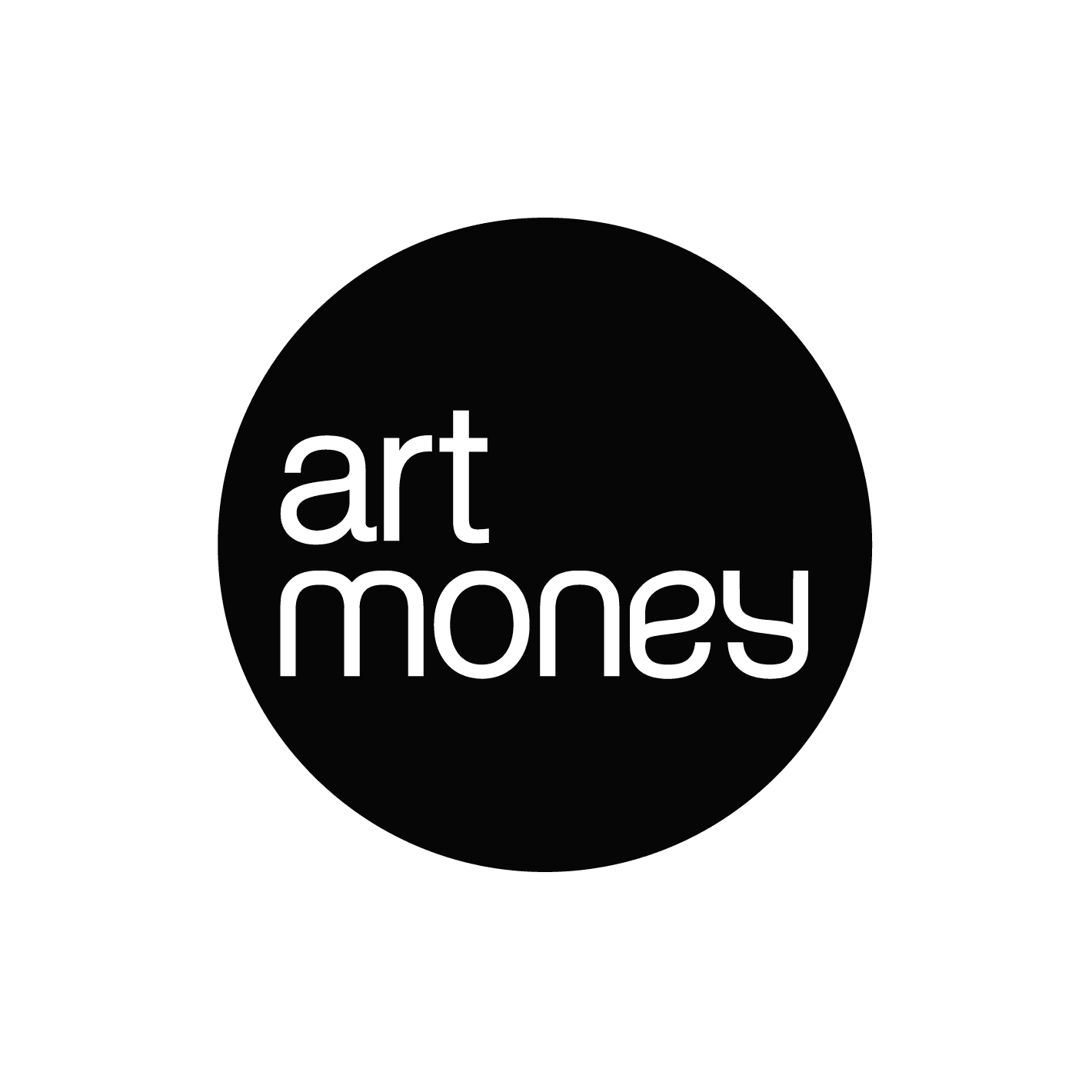Welcome to the Aleph Contemporary Journal—a curated space dedicated to the exploration and celebration of contemporary art. Here, you’ll find thoughtful articles delving into the philosophies of modern artistic practices, insights into curation, and reflections on cultural trends shaping the art world today. Our blog aims to inspire, challenge, and connect art enthusiasts, collectors, and creatives alike, offering fresh perspectives on what it means to engage with art in the 21st century. Join us as we explore the ever-evolving conversation between artists, their work, and the wider world.
-

Finding Order in Chaos
Nadia Ryzhakova’s “Ciphers of Nature” at Aleph Contemporary7–29 November 2025 | Aleph Contemporary, Stroud
“There is a haunting if deceptive modernity in the notion… that arteries and the branches of trees, the dancing motion of the microcosm and the solemn measures of the spheres… are all ciphers.”
— George Steiner, Lifelines -

Where Sky Meets Land:
The Luminous World of Victoria Orr EwingIn an intimate conversation for Aleph Contemporary, conducted by her daughter Talia, Victoria Orr Ewing opens a window onto the inspirations and philosophy behind her landscapes. Her paintings, suffused with stillness and timelessness, often emerge from mist, rain, and fading light—worlds that invite contemplation and a quiet reverence for the natural world.
-
 'Landscape in Our Midst'Aleph Contemporary - Station Road, Stroud, GL5 3AR
'Landscape in Our Midst'Aleph Contemporary - Station Road, Stroud, GL5 3ARDates - Fri 17th Oct - Mon 3rd Nov 2025
In conjunction with the Autumn Arts Trail, Aleph Contemporary presents a new body of work by Deborah Cox - Open daily 10am–4pm except Tuesdays, + AA Trail times.
-

Angie Spencer: A River Runs Through It
Nicholas Wells Visits Angie Spencer's StudioAmid the quiet hills of Stroud, painter and classical violinist Angie Spencer has been quietly composing a symphony of water—rendered not only in oil on canvas, but in movement and light. Her upcoming exhibition, WATER WAYS, at Aleph Contemporary, draws us into a world where the subtleties of rivers, seas, and still ponds are not merely seen, but transposed on canvas. This is not simply landscape painting; it is lived experience—translated through brushstroke, bow, and a finely tuned sensitivity to the abundant nature of Gloucestershire and beyond. In the essay below, Nicholas Wells reflects on Spencer’s unique artistic practice, her musical intuition, and the elemental pull of water that now shapes both her artistic practice.
-
The Illusion of Colour
Perception, Science, and the Artist’s InterpretationWhat does it really mean when we say a rose is red? Colour is not an inherent quality of objects but a phenomenon of light, perception, and interpretation. Scientists, philosophers, and artists have long debated the nature of colour, from Goethe’s theories to modern neuroscience. This article explores how we perceive colour, why language struggles to define it, and how artists use paint to communicate beyond words.
-
Enzo Marra's canvases vibrate with an almost sculptural intensity, where thick layers of paint become both medium and message. Drawing inspiration from artists like Philip Guston and Leon Kossoff, while critically engaging with the commodification of art, Marra’s work is both deeply personal and strikingly universal. This essay explores the philosophy behind his practice, his rejection of artistic stagnation, and his ongoing search for that rare, perfect painting.
-
Sean Parker is a painter, writer, and political commentator whose work blurs the boundaries between art and critique. Known for his layered, Cubist-inflected portraits and bold abstract compositions, his paintings deconstruct and reconstruct imagery, challenging traditional representation. His subjects—ranging from cultural icons like Ricky Gervais and Christopher Hitchens to deeply personal figures—are chosen for their integrity, influence, and presence. Alongside his artistic practice, Parker is an outspoken voice in contemporary political discourse, with a significant X (formerly Twitter) following and a reputation for tackling miscarriages of justice, free speech, and cultural politics. His work resists easy categorisation, existing at the intersection of visual art, independent thought, and social commentary.
-

Vanessa Wilson: The Departure Lounge
A Painter in MotionVanessa Wilson is an artist whose work navigates the shifting boundaries between memory, movement, and place. Rooted in both personal history and philosophical inquiry, her paintings capture the fleeting nature of transition—figures poised on the edge of departure, landscapes dissolving into abstraction, colour as an emotional register of time and experience. With a career shaped by constant motion across continents, Wilson’s work is a meditation on liminality, belonging, and the spaces we pass through but never truly leave behind. Her upcoming 2025 exhibition, The Departure Lounge at Aleph Contemporary, explores these themes with a nuanced, painterly language that is both instinctive and deeply considered. -
Lloyd Durling: Walking Through Memory and Form
Interview by Nicholas Wells for Aleph ContemporaryLloyd Durling’s work exists in the liminal space between memory, landscape, and abstraction. Rooted in his psychogeographic explorations, his paintings channel the traces of history—medieval wall paintings, ancient ruins, and unseen forces—through layered mark-making and spectral palettes. His influences stretch across literature, philosophy, and material culture, rejecting photographic documentation in favor of lived experience and recall. Recognised by institutions such as the Pollock-Krasner Foundation, Durling’s practice continues to evolve, shifting in scale while remaining deeply attuned to the hidden narratives embedded within place and time. -
Beauty and Its Representation in Art
The Struggle Against ArtificialityIn an age where artificiality dominates artistic expression, the essence of true beauty is increasingly lost. The unique presence of an original artwork, with its depth, texture, and history, is diminished when replaced by digital reproductions and mass-produced imitations. Walter Benjamin’s concept of the ‘aura’—the irreplaceable authenticity of a piece—is vanishing as convenience takes precedence over meaningful engagement. This shift reflects a broader cultural trend where the superficial is mistaken for the sublime, and where beauty, once revered for its depth and imperfection, is now flattened into mere aesthetic decoration. To reclaim beauty, we must resist this erosion, embracing art that demands contemplation, effort, and an authentic connection.
-

Finding Balance in Motion at Congruent Sym
Marek Tobolewski's Meditative Exploration of Symmetry and StillnessMarek Tobolewski, a celebrated British contemporary artist, prepairs for his forthcoming exhibition, Congruent Sym, at Aleph Contemporary in Stroud. Renowned for his mastery of symmetry and fluid forms, Tobolewski invites viewers into a meditative exploration of balance, stillness, and transformation. Through meticulously crafted drawings and paintings, his work delves into the interplay between control and spontaneity, structure and fluidity. This journal examines Tobolewski's practice, artistic philosophy, and the themes that define his visual language, offering insights into the alluring meditative quality of his creations. -
The Influence of Literature and Philosophy on Modern Art
AN ENQUIRY into the Works of Kafka, Joyce, Proust, and BeyondThe intersection of literature, philosophy, and art has produced some of the most thought-provoking and influential works in modern culture. Writers like Franz Kafka, James Joyce, Marcel Proust, and Samuel Beckett not only reshaped the narrative techniques of their time but also engaged deeply with the existential, absurdist, and phenomenological questions of human experience. These authors, alongside philosophers such as Jean-Paul Sartre, Albert Camus, and Friedrich Nietzsche, offered profound insights into the nature of identity, alienation, time, and the search for meaning in an often indifferent world. This essay explores how their works have left an indelible mark on visual artists and contemporary culture, illustrating the enduring relevance of their themes in both literary and artistic expression.
-

Nature and Observation as Creative Catalysts
Gardens, Abstraction, and Art: Exploring Nature and CreativityGardens have long been spaces of contemplation, creativity, and transformation, bridging the natural world with human imagination. From ancient enclosed sanctuaries to contemporary landscape design, they have inspired artists to explore abstraction, form, and the sensory experience of nature. At Aleph Contemporary, we celebrate the intersection of gardens and art, particularly in the realm of abstraction. Many of the artists we work with draw upon the organic rhythms, colours, and textures of plants and landscapes, translating them into works that capture the essence of nature beyond representation. Like a carefully composed garden, abstract art plays with space, movement, and emotion, offering a way to engage with nature through perception and feeling rather than direct depiction.
-
Creating Art Through Crisis:
The Role of Abstract Art in Difficult TimesAbstraction has always been a powerful means of expressing the ineffable, especially in times of upheaval. From Mark Rothko’s luminous meditations on the void to Cy Twombly’s raw, instinctive gestures, abstract art captures the emotional and spiritual complexity of human existence. This legacy continues in "Sleepwalking," the forthcoming exhibition by Jane Garbett, presented by Aleph Contemporary. Opening in Stroud in March 2025, Garbett’s work reflects the turmoil and beauty of modern life through vibrant, layered compositions that evoke Rothko’s spiritual depth and channel Twombly’s chaotic vitality. -
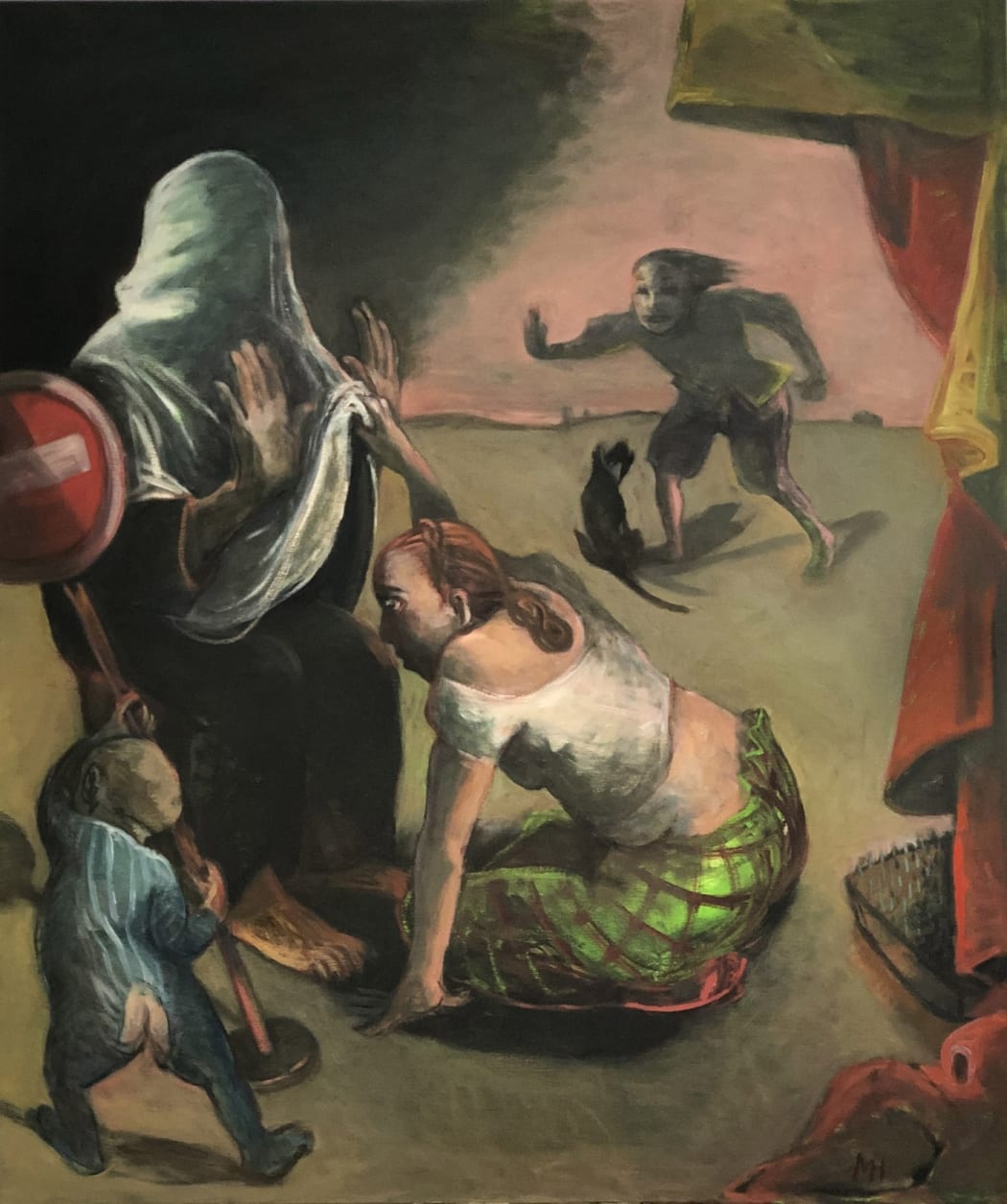 Marcelle Hanselaar At the Oracle of Limbo 4, 2019
Marcelle Hanselaar At the Oracle of Limbo 4, 2019Kafka’s Influence on Contemporary Art
Alienation, Transformation, and AbsurdityFranz Kafka, the master of existential unease and surreal storytelling, remains one of the most influential figures in 20th-century literature, with his ideas continuing to ripple across contemporary art. His works, such as The Metamorphosis and The Trial, delve into themes of alienation, absurdity, transformation, and oppressive systems, creating a "Kafkaesque" lens through which to explore the complexities of human existence. These themes have profoundly shaped the practices of contemporary artists, who transform Kafka’s literary vision into compelling visual narratives. At Aleph Contemporary, artists such as Archie Franks, Christy Burdock, Ben Westley Clarke, Alexander Adams, Marcelle Hanselaar, and Chris Burns channel Kafka’s legacy, producing works that grapple with ambiguity, power, and the fragility of identity. This essay explores how Kafka’s enduring influence resonates in their art, offering collectors a chance to engage with pieces that are as conceptually rich as they are emotionally evocative.
-
 Lucie Winterson - Phusis, 2022
Lucie Winterson - Phusis, 2022The Space Between Abstraction and Representation
A Guide for New CollectorsArt that occupies the space between abstraction and representation offers a captivating blend of clarity and ambiguity. These works invite viewers to recognise traces of the familiar while opening the door to boundless interpretation through abstraction. For new collectors, this genre offers a unique opportunity to acquire pieces that are both visually compelling and deeply thought-provoking. Balancing the emotional immediacy of abstraction with the conceptual grounding of representation, artists like Gordon Dalton, Lindsay Mapes, Polly Morgan, and Lucie Winterson exemplify the rich potential of this liminal space. This article explores how these artists, alongside key philosophical ideas, can guide you into building a meaningful collection.
-
Three Things About Abstraction
Understanding Its Evolution and Visual LanguageAbstraction is one of the most revolutionary and enduring forces in the history of art, reshaping how we perceive and engage with visual expression. By moving beyond representation, abstract art creates a universal language of colour, form, and composition that invites viewers to interpret meaning for themselves. From its roots in the early 20th century to its continued relevance in contemporary practice, abstraction remains a space for innovation and introspection. This article explores three key aspects of abstraction—its evolution, its visual language, and its ability to engage the viewer—offering a deeper understanding of why abstraction continues to captivate and challenge us. -
 Rebecca Meanley - Triptych Red Ground and Blue Distemper, 2019
Rebecca Meanley - Triptych Red Ground and Blue Distemper, 2019How to Interpret Abstract Art
Unlocking the Power of Visual AmbiguityInterpreting abstract art is both an intellectual challenge and an emotional journey. Unlike representational works that mirror the physical world, abstract art shifts the focus to colour, form, texture, and composition, inviting viewers to engage on a deeper, often personal level. Its ambiguity is its strength, offering freedom from fixed narratives and the opportunity to connect with an artist’s inner vision or one’s own interpretations. Whether navigating the haunting semi-abstractions of Leon Spilliaert or the dynamic energy of Kandinsky’s compositions, abstract art calls for an open mind, a willingness to explore, and an appreciation for its limitless possibilities.
-

Pre Exhibition Interview with Bob Davison
Studio VisitIn a tranquil Gloucestershire studio surrounded by specimen trees and a flourishing garden, Bob Davison creates art that bridges the gap between observation and abstraction. His works, featured in the upcoming solo exhibition About Looking at Aleph Contemporary in Stroud from 7 February to 22 March 2025, showcase his mastery of painting. Drawing inspiration from nature, his garden, and the Cotswold landscapes, Davison’s paintings invite viewers to slow down and explore the transient beauty of the world through layers of colour, texture, and intricate mark-making. This exhibition provides focus on how we perceive and experience contemporary art.
-

I Want to Be an Art Curator
A Vision for Curatorial Practice in GalleriesBecoming an art curator is a journey into the heart of creativity, blending artistic vision with organisational prowess. Whether working in public galleries to educate and inspire or in commercial spaces like Aleph Contemporary to showcase cutting-edge contemporary art, curators play a pivotal role in shaping how art is experienced. This essay delves into the multifaceted responsibilities of curators, their pathways to success, and the transformative power of curation in both public and private spheres. -
Paul Klee and the Poetics of Painting
Insights into His Influence on Modern Art and PhilosophyPaul Klee’s philosophy of painting reshaped modern art, blending abstraction, philosophy, and poetic revelation. Discover how his work continues to inspire contemporary artists and engage with the human condition.
-
Art Beyond Trends
The Philosophy of Belief-Based CreationArt is not a product to fit market trends but an authentic expression of belief. Explore how belief-based art challenges traditional marketing, draws on philosophical insights, and redefines the role of contemporary art. -
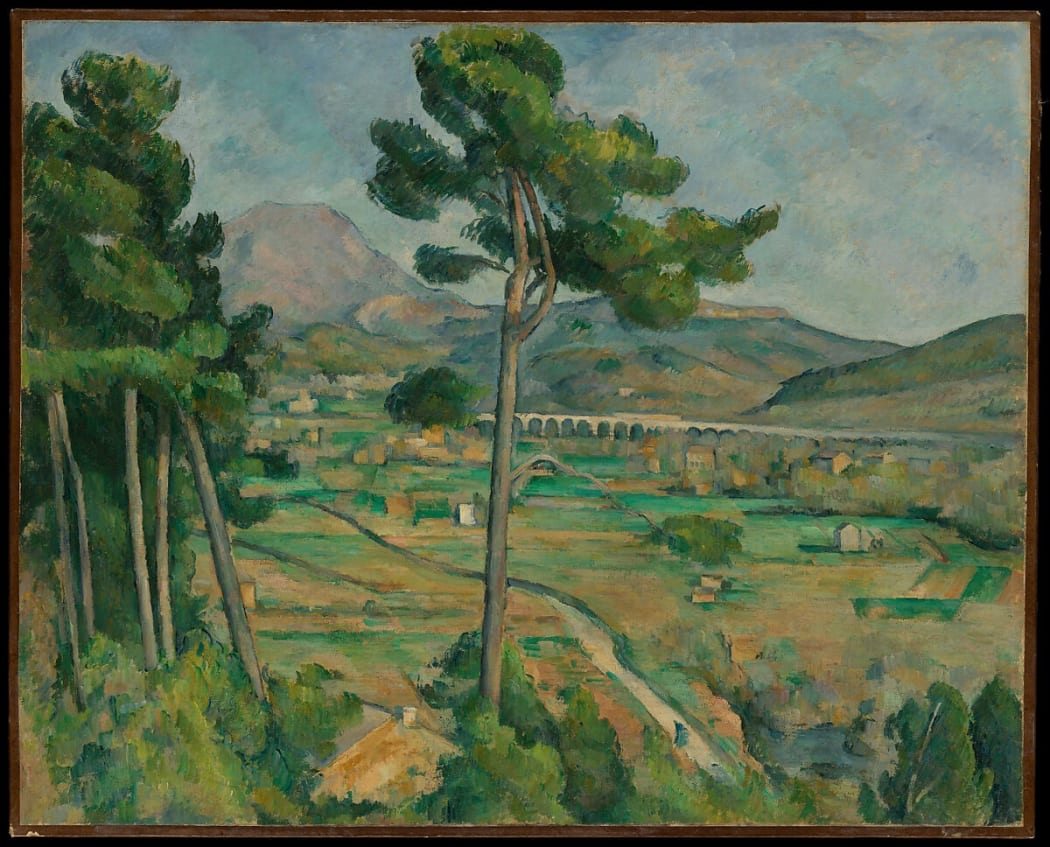 Mont Sainte-Victoire and the Viaduct of the Arc River Valley | Metropolitan Museum
Mont Sainte-Victoire and the Viaduct of the Arc River Valley | Metropolitan MuseumCézanne and the Act of Creation
How Cézanne’s Philosophy of Painting Reshaped Modern ArtPaul Cézanne revolutionised modern art with his philosophy of painting as an act of creation, not imitation. At Aleph Contemporary, we celebrate his enduring legacy, showcasing contemporary art that connects his pioneering vision to today’s dynamic artistic practices.
-
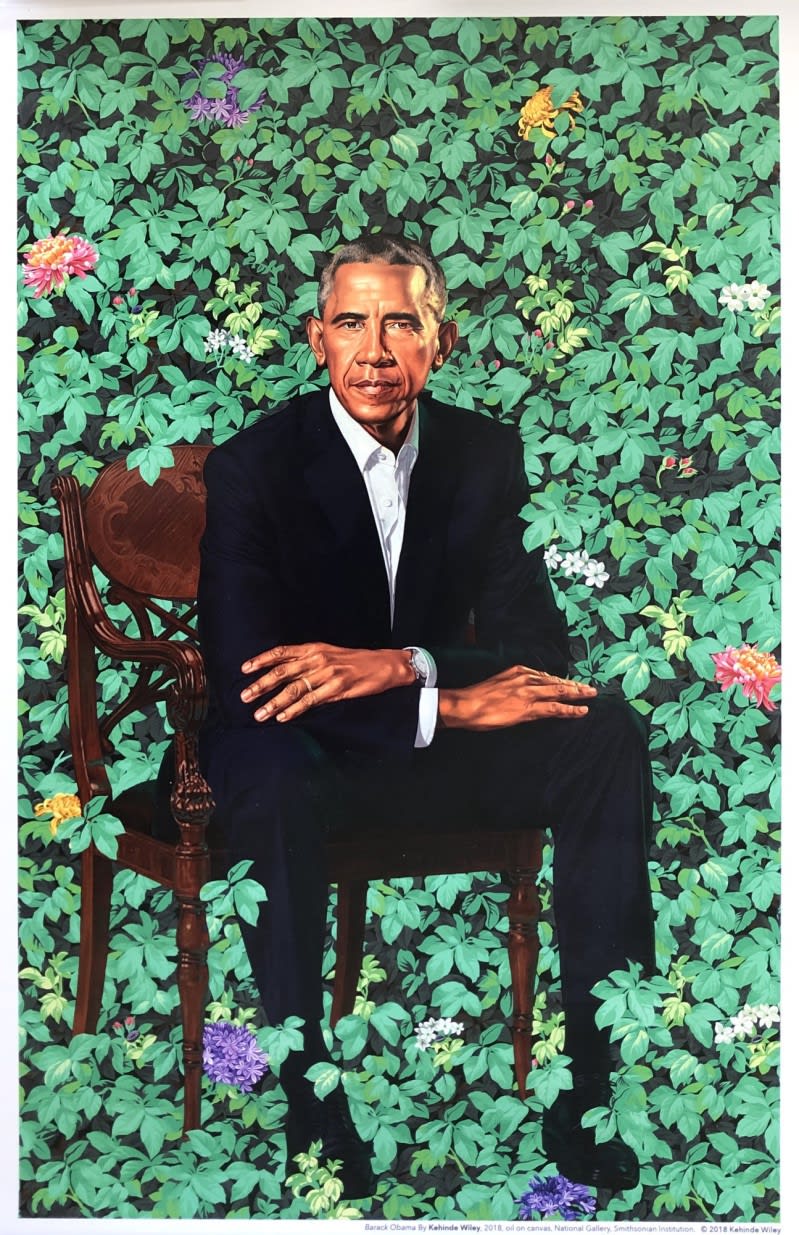
How Contemporary Art Reflects the Human Condition
Examining How Contemporary Artists Portray Human ExperiencesAt Aleph Contemporary, we believe art is a mirror to the human condition, offering insights into our shared experiences and unique perspectives. Our curated collections celebrate how contemporary artists explore identity, emotions, and societal challenges, crafting thought-provoking works that engage with the complexities of modern life. Join us as we delve into the transformative power of art to connect, question, and illuminate the essence of being human. -
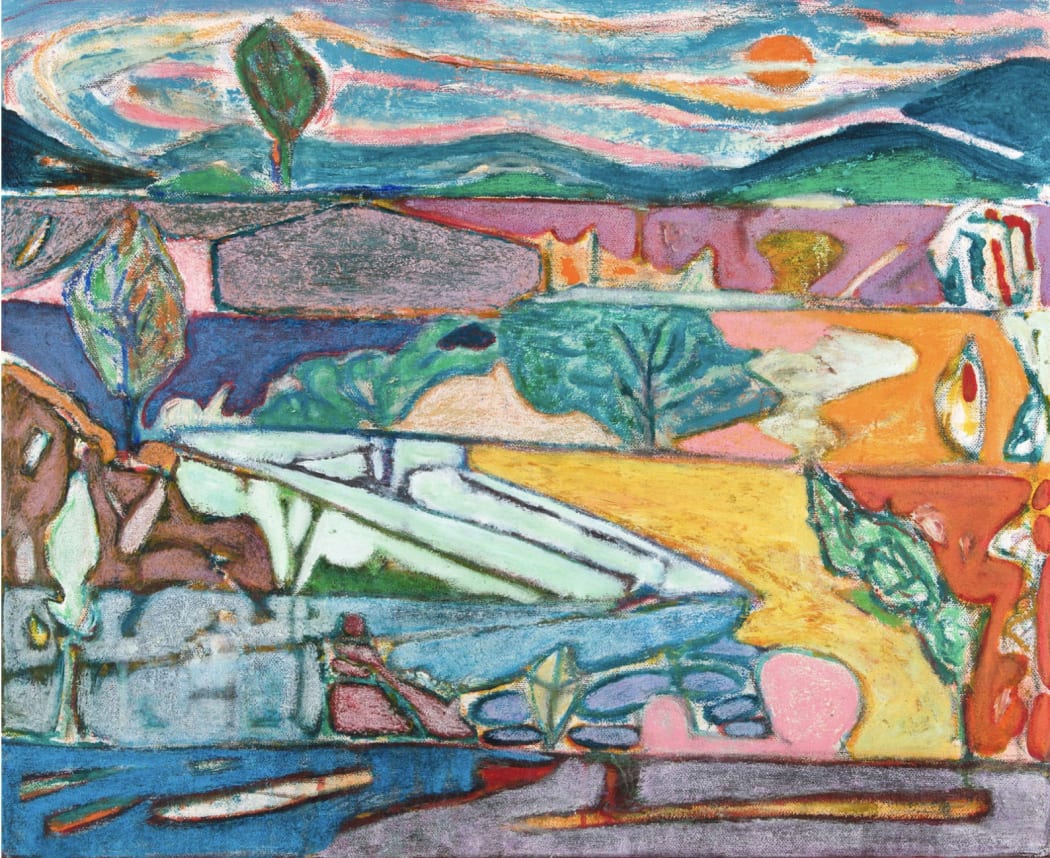 Gordon Dalton British, b 1970 Range Life, 2023
Gordon Dalton British, b 1970 Range Life, 2023How Art Breaks Utilitarian Biases
The Philosophical Argument for Art’s Role Beyond PracticalityArt has long been perceived by some as a luxury, peripheral to the essential functions of society. This utilitarian perspective evaluates art based on its practical contributions, often overlooking its profound impact on human experience and societal development. However, a deeper philosophical exploration reveals that art transcends mere functionality, playing a crucial role in shaping our understanding of the world and ourselves. -

Why Britain’s Middle Class Is Turning Away from Art
And Why It MattersThe British middle class has long been a cornerstone of cultural engagement, supporting art and ideas that shape society. However, recent years have seen a troubling decline in their connection with contemporary art, with local art galleries, contemporary art galleries, and public art galleries and museums increasingly overlooked. This disengagement not only diminishes the vibrancy of the art world but also risks silencing a vital societal voice. How has this shift come about, and what can be done to rekindle the middle class's role as cultural patrons and champions?
-
Transform your living space into a vibrant showcase of personal expression with a contemporary art gallery wall. From mixing mediums to integrating personal pieces, this guide offers 7 essential tips to help you curate a stunning, cohesive, and deeply personal art display. Let your walls tell your story while celebrating the dynamic world of contemporary art.
-
In conversation with Barnie Page
5 questions on Art and InspirationWe caught up with Barnie Page, curator of the Aleph Contemporary 2024 Summer Exhibition, to explore his decade of experience in contemporary art curation. From inventive projects blending art with daily life to celebrating Stroud’s vibrant artistic community, Barnie shares insights into his creative process, inspirations, and the unique charm of the Five Valleys that influences his work.
-
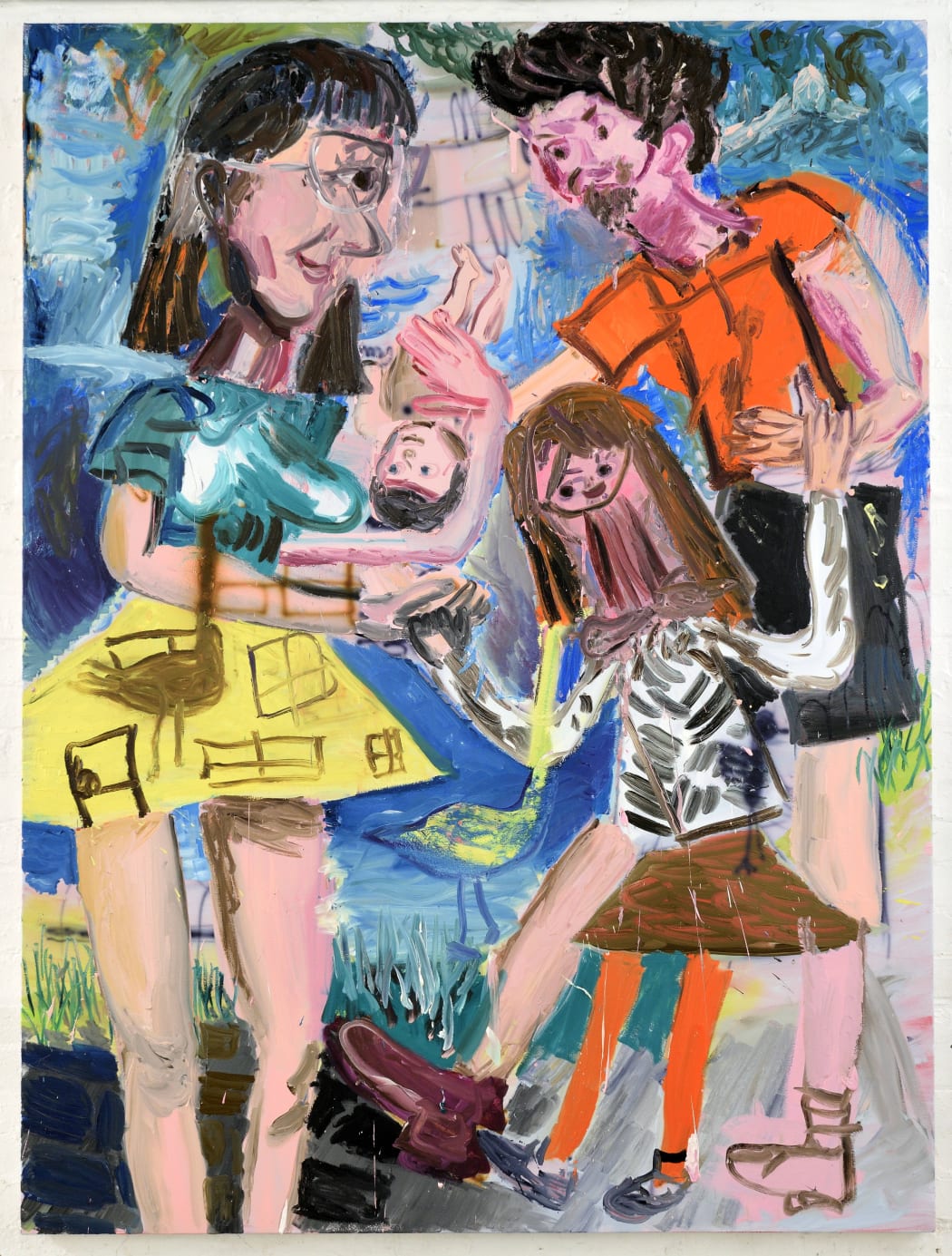 Jaime Valtierra, It Was Real Many Times Over (Victoria Park) 2021Ruth Helen Smith’s essay explores the necessity and power of Contemporary Art as an expression of the human experience. It celebrates art’s ability to unite, question, and inspire while proclaiming freedom against utilitarian biases and oppressive power structures. Contemporary Art is not a luxury—it’s an essential dialogue that empowers us to participate in the present.
Jaime Valtierra, It Was Real Many Times Over (Victoria Park) 2021Ruth Helen Smith’s essay explores the necessity and power of Contemporary Art as an expression of the human experience. It celebrates art’s ability to unite, question, and inspire while proclaiming freedom against utilitarian biases and oppressive power structures. Contemporary Art is not a luxury—it’s an essential dialogue that empowers us to participate in the present. -
Squiggles All the Way Down
On the Painting of Phil King by Daniel CoffeenDaniel Coffeen has a PhD in Rhetoric from UC Berkeley where he was a lecturer for many years, in addition to teaching graduate seminars in critical theory at the San Francisco Art Institute. He's a frequent contributor to philosophy podcasts and a prolific blogger.

-
Phil King
HISTORY THOUGHTSPhil King’s essay "History Thoughts" delves into the interplay of history, art, and creativity, exploring how personal experiences and philosophical insights shape his work. From the visceral influence of artists like Paul Klee and Picasso to the contradictions of straddling England and France, King weaves a compelling narrative of how the past informs the present in his paintings.
-
GORDON DALTON
DEAD RECKONINGDead Reckoning is the process of calculating your direction by using a previously determined position. It is thought that Dutch sailors threw dead bodies overboard to calculate their future route. This seemed apt for a solo show in my 50th year in 2020. It’s not about looking back, it’s about looking forward. Some hope amid the cynicism. I’m trying to make the viewer look longer and harder, to have a one on one relationship with landscape painting; to make them curious and find some joy. The places depicted in my work are partly an invention, full of contrasts and spontaneity. They combine memories of places I have lived or longingly imagined, an idea of a place and the melancholy of longing and wanting to belong. An unfashionable romanticism grounded in the act of painting.
Gordon Dalton 2020
-
Alastair Gordon's Island
Material Thought: From Hyperrealism to GestureAlastair Gordon reflects on the transformative shift in his artistic practice, moving from hyperrealism to a gestural, intuitive approach. Through poetic exploration, he discusses how this evolution reveals the artist's vulnerabilities, sensibilities, and deeper connection to material thought. Gordon’s essay delves into the interplay between observation, imagination, and embodiment, offering a profound meditation on the creative proces
-
Essay by Matthew Collings
For the Exhibition: 'Circling Forces' featuring Phil King and Joe Packer“I take a remote, original point of creation, where I presume formulas for human, animal, plant, rock and for the elements, for all circling forces at the same time.
Art is like creation, and applies on the first and last day."
Paul Klee, Diary, 1916
-
'Devil's Island'
Ruth Smith on a painting by Paul Newman featured in the exhibition 'Reflections'.Paul Newman’s Devil’s Island (2017) is a striking exploration of crisis, chaos, and the interplay of precision and disorder. Ruth Smith’s analysis captures the dynamic tension in the work, focusing on the juxtaposition of a precisely rendered lightning bolt and the thick, chaotic paint strokes of a startled duck. This vivid painting portrays the unsettling dissonance between the clarity of external events and the internal turmoil they provoke, making it a compelling visual meditation on the nature of crisis and perception. -
From The Handsome Pork-Butcher To Don Quixote
Essay by Paul NewmanPaul Newman’s reflections on The Handsome Pork Butcher by Francis Picabia explore how this peculiar and evocative painting profoundly influenced his artistic practice. With its playful ambiguity, tactile experimentation, and satirical undertones, Picabia’s work sparked a creative shift for Newman, inspiring him to embrace risk, absurdity, and the evolving nature of art. Through anecdotes and connections to his own paintings, Newman delves into themes of struggle, indecision, and the journey of artistic exploration, linking Picabia’s legacy to his own ongoing experimentation. -
Sacha Craddock’s exploration of Christy Burdock’s work delves into the nuanced interplay of observation, perception, and representation. Through her paintings and drawings, Burdock merges the specific with the general, capturing moments of personal and political significance while challenging the boundaries between illustration and fine art. Craddock highlights Burdock’s fascination with group dynamics, hidden behaviour, and the invisible forces of control and expectation. With her recent exhibition Politics, Sex and Religion, Burdock transitions from drawing to painting, expanding her ability to convey atmosphere, emotion, and layered meaning. Her work reveals truths beneath the surface, embodying a haunting yet palpable resonance.
-
WITHOUT BORDERS - ALASTAIR GORDON
ALASTAIR GORDON IN CONVERSATION WITH CHARLEY PETERSIn WITHOUT BORDERS, Alastair Gordon takes us on a transformative journey through his evolving artistic practice, blending meticulously crafted trompe l’oeil paintings with collages rich in texture and spontaneity. In conversation with Charley Peters, Gordon reflects on the dialogue between these two mediums, exploring themes of illusion, materiality, and the creative process during the lockdown period. The exhibition challenges preconceived notions of his work, showcasing a new urgency and experimentation driven by the shifting realities of our time. Through thoughtful insights, Gordon highlights the intimate connections between painting, collage, and the world around us.
-
FIVE QUESTIONS WITH GORDON DALTON
Hannah Payne interviews Gordon Dalton for 'THE ART FIVE'THE ART FIVE is a contemporary art blog created by Hannah Payne.
Hannah Payne is an art world professional with 20 years background in the art and heritage sector including working with artists, institutions and leading art programmes and exhibitions. In this edition of The Art Five Hannah talks to Gordon Dalton about his recent exhibition ‘Birdhouse Blues' at Aleph Contemporary and its virtual touring to Atelier de Melusine.
-
Christy Burdock reflects on the haunting resonance of Léon Spilliaert’s melancholy works during the isolation of the COVID-19 lockdown. Drawing parallels between Spilliaert’s solitary figures and her own experiences of confinement, Burdock explores the role of art as a timeless dialogue between artists, transcending isolation and offering solace. Her essay delves into Spilliaert’s introspective self-portrait, Silhouette of the Artist (1907), connecting its themes of loneliness and observation to her own painting, Curtain Twitching (2020). In an era marked by social distancing and uncertainty, this poignant reflection underscores the enduring ability of art to comfort and connect.
-
GORDON DALTON ON GIORGIO MORANDI
Lockdown with Mr MorandiGordon Dalton reflects on the solace found in the quiet, contemplative works of Giorgio Morandi during the global lockdown of 2020. In this deeply personal essay, Dalton explores how Morandi’s understated still lifes and rare floral paintings have provided him with moments of peace and creative grounding throughout his artistic journey. Juxtaposing the turbulence of the present with Morandi’s serene imagery, Dalton reveals how art can serve as a timeless refuge, offering space for introspection, imagination, and emotional clarity. Through anecdotes from his own life and career, Dalton underscores the enduring relevance of Morandi’s restrained yet profound body of work.
-
Francisco Goya (1746–1828) remains one of the most profound and versatile artists in history, blending sharp social critique with a mastery of visual storytelling. From his biting satires of 18th-century Spanish society to the haunting “Black Paintings” that delve into the depths of human suffering, Goya’s work bridges the classical and modern worlds. Ben Westley Clarke’s essay explores Goya’s unflinching gaze at the disparities and hypocrisies of his time, drawing parallels to our contemporary struggles. With keen insights into Goya’s themes of power, violence, and humanity, this essay underscores the enduring relevance of his art in confronting social injustice and revealing uncomfortable truths.
-
Josef Albers (1888–1976) revolutionised our understanding of colour with his pioneering theories and experimental teaching methods. His seminal book, Interaction of Color, remains a cornerstone for artists, educators, and designers, illustrating how colours interact and deceive the eye. Through practical exercises and perceptive insights, Albers demonstrated that colour is relative, personal, and endlessly fascinating. Helen Brough reflects on Albers’s enduring influence, highlighting his belief in trial and error and the profound relativity of colour—a lesson resonating deeply in today’s world.
-
Lee Krasner by Tess Williams
'Living Colour'Lee Krasner (1908–1984) stands as a testament to resilience and innovation in the world of Abstract Expressionism. Long overshadowed by her husband, Jackson Pollock, Krasner’s work remained underappreciated during her lifetime, but the Barbican Gallery’s 2019 exhibition, Lee Krasner: Living Colour, brought her remarkable legacy into the spotlight. As a first-generation Abstract Expressionist and an overlooked female artist of the 20th century, Krasner’s journey through cycles of destruction and renewal reflects her relentless pursuit of artistic reinvention. Her commitment to materiality, process, and emotional expression reveals a practice deeply connected to life itself—a legacy that continues to inspire artists and audiences alike. -
'The Shifting Stage' by Paul Newman
From the Surreal to the Uncanny and into the Romantic landscape.The shifting boundaries between reality and imagination, history and memory, form the core of Paul Newman’s exploration in art. Drawing on the works of surrealists like Emmy Bridgwater and René Magritte, alongside the haunting narratives of Franz Kafka’s The Trial, Newman weaves a narrative that examines the uncanny, superimposition, and the evocative power of distorted memories. Through a personal lens, Newman reflects on the transformative moments sparked by encounters with Bridgwater’s Night Work is About to Commence and Constable’s Salisbury Cathedral from the Meadows. These experiences not only inspire his mixed media and performance works but also reveal a labyrinth of emotions, history, and creativity that parallels the unsettling worlds depicted by the surrealists and modernists. In this essay, Newman traces the intersections of these influences, offering insights into his creative process and the broader dialogue between past and present in art. -
Chaïm Soutine by Archie Franks
'Carcass of Beef'"Exploring the Depth of Chaïm Soutine's 'Carcass of Beef': A Journey Through Intense Textures and Vivid Colours"
This description delves into the captivating essence of Chaïm Soutine's 'Carcass of Beef' (circa 1925), an oil on canvas masterpiece housed in the Albright-Knox Art Gallery in Buffalo, New York. Soutine, a Russian-Jewish émigré painter in France, presents a work that defies traditional categorization. The painting is marked by swirls of vibrant paint applied with an array of tools from brushes to palette knives, reflecting a profound emotional depth. The subject matter, reminiscent of old masters like Rembrandt, encapsulates landscapes bordering on abstraction and gravity-defying designs.
Soutine's work, especially the 'sides of beef' series, emerges as a favorite for its intense coloration and dynamic brushwork. These pieces, including 'Carcass of Beef', place the subject at the center, compelling the viewer with its textured surface and pulsating colors. The narrative of Soutine pouring fresh blood over his studio carcasses, whether factual or not, underscores the visceral impact of his art.
The essay also touches on a personal discovery of Soutine through Roald Dahl's story 'Skin', where Soutine's art is metaphorically likened to a tattoo, symbolising the deep, skin-deep impact of his work. Archie Franks' 2019 'Full English Breakfast' is also mentioned, hinting at a continued legacy of Soutine's influence in contemporary art. This encapsulates the unique and profound experience of engaging with Soutine's 'Carcass of Beef', a painting that not only captures the viewer's gaze but also resonates deeply within them.
-
Philip Guston's late paintings, by Enzo Marra
The influence of Philip GustonEnzo Marra reflects on his profound encounter with Philip Guston's 'Painting, Smoking, Eating' (1973) at the Royal Academy's 2004 exhibition. He admires Guston's courageous shift to autobiographical themes, revealing personal struggles through expressive brushwork. Marra draws parallels to his own artistic journey, where his characters, often depicted in studios or amidst deluges, symbolize the creative struggle and broader human experiences. He emphasizes the intimacy of his smaller-scale works, inviting viewers closer to the raw energy reminiscent of alternative comic art. Marra aspires to the authenticity found in Guston's later pieces, acknowledging that his own artistic path continues to evolve, bringing to life ideas long confined to sketchbooks.
-
Matisse by Dan Coombs
What is a gesture?Dan Coombs offers a deeply personal and thought-provoking exploration of the role of gesture in modern painting, focusing on the transformative works of Henri Matisse. Through a lens of spontaneity, immanence, and artistic reinvention, Coombs examines how Matisse’s expressive gestures transcend the boundaries between natural spontaneity and deliberate precision. Reflecting on the physical and emotional depth of Matisse’s cut-outs and paintings, Coombs delves into the paradoxes of the medium, revealing how the act of creating can both connect to and separate from reality. This essay is as much an homage to Matisse as it is a meditation on the universal truths embedded in the art of gesture.
